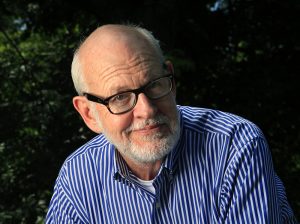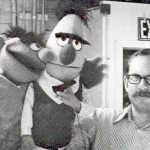Para crear una buena aislación de sonido, uno debe utilizar los siguientes principios generales:
Misa-utilizar materiales pesados
-Air-estrechez cubrir la totalidad hermética de alojamiento
-Flexibilidad mantenerla flácido, mejor se solapan, apretado tramo de
Isolation (separar separados) desde que rodea la estructura
Aunque cada proyecto tiene que ser considerado individualmente, los principios anteriores son pertinentes en la mayoría de los casos.
MASIVA:
Enormes obstáculos, pesado bloqueará más racional de la energía que las barreras ligero. (Menos ruido irá por él. ) Esto se debe a la alta densidad de materiales pesados suprime las vibraciones de sonido dentro del material, a un grado que el muro dentro de una habitación, vibra con menos movimiento. Por lo tanto, la amplitud de las ondas de sonido de radiación en el aire dentro de la sala, loudness, también está minimizado.
NOTA: Aunque una reducción en la amplitud de las ondas de sonido afecta strength o ~ loudness ~ de un sonido, no afecta la frecuencia (de esa cancha sólida.
Ley de comunicación
La Ley establece que la misa del aislamiento de sonido de una partición de capa tiene una relación lineal con la densidad de superficie (en masa por unidad de superficie) de la partición, y aumenta con la frecuencia del sonido.
Construcción de capa única incluye barreras compuestas como ladrillos colocados, mientras capas están unidas.
La pesada la barrera, mejor la reducción racional.
En teoría, para cada duplicación aumenta aislamiento de sonido masiva de 6 dB.
Por ejemplo, la reducción promedio de un aumento sólido muro de ladrillos de 45 dB a 50 dB cuando el grosor aumenta de 4 pulgadas a 8,4 pulgadas. Esta duplicación de masa no tiene que lograrse mediante una duplicación de grosor, como la masa de un muro para fines de aislamiento de sonido es especificado por su densidad superficial medido en libras por pie cuadrado (en lugar de pies cúbicos). Similar reducción racional puede lograrse añadiendo más delgado, pero más materiales, como una capa de masa cargados de vinilo.
La mayor frecuencia es más fácil bloquearla.
Aislamiento de sonido por unos 6 dB aumenta cuando la frecuencia es doble.
Cualquier duplicación de frecuencia es un cambio de una octava. Por ejemplo, un muro de ladrillos de 10 dB proporciona aislamiento contra más de 400 Hz sonidos contra 100 Hz sonidos. (100Hz = bajo nota, 400 Hz = Voice). Este cambio, entre 100 y 200 Hz y luego entre 200 y 400 Hz, es un aumento de dos octaves. En casos extremos puede ni siquiera escuchar el sonido, pero los pies del muro puede vibrar al tacto.
Pero aumentar la masa sola no es suficiente. Si sientes que la ley masiva no funciona en su construcción, es porque otros factores como aire estrechez, rigidez y aislamiento tiene un efecto.
AIR-TIGHTNESS:
Áreas de aislamiento reducido o pequeños huecos en la construcción de un muro tienen un efecto mucho mayor en aislamiento total que se podría pensar. El aislamiento efectivo de una estructura depende de aire estrechez y uniformidad
Por ejemplo, si un muro de ladrillo contiene un agujero o grieta que en tamaño representa sólo el 0,1 del área total del muro, la reducción promedio de ese muro de sonido se reduce de 50 dB a 30 dB por 40 (!).
En general, leaksâ â ~ sonido deben considerarse cuidadosamente como filtraciones de agua.
Huecos de aire comunes: Wall ” piso lagunas, lagunas en puertas, sellos de pobres, ejecuta el conducto Unsealed, se ejecuta el cable Unsealed, material poroso barrera (de Cinder)
Otro aspecto de aislamiento acústico, que a menudo es ignorado es la coherencia del STC materials (Sound Transmission Coeficiente) utilizados en la construcción. Su construcción es tan insonorizada como su punto más débil. Por ejemplo, una puerta abierta que ocupan el 25 de la esfera de un muro de medio ladrillo reduce la eficiencia en la reducción promedio de ese muro de sonido de 45 dB a 23 dB.
FLEXIBILIDAD MEMBRANE:
La paralización es una propiedad física de una partición y depende de factores como la elasticidad de los materiales y la forma en que la partición está instalado. Alta rigidez de la barrera puede causar pérdida de aislamiento en ciertas frecuencias debido a resonancias y efectos coincidencia. Estos efectos disminuyen los resultados esperados según la Ley masiva.
Resonancia
Pérdida de aislamiento por resonancia se produce si las ondas sonoras incidente tienen la misma frecuencia que la frecuencia natural de la partición. El aumento de las vibraciones que producen en la estructura se pasa al aire y el aislamiento se redujo. Frecuencias Resonant generalmente son bajos y más probabilidades de causar problemas en los espacios aéreos de construcción cavidad.
Coincidencias
Pérdida de aislamiento por coincidencia es causada por la flexión vibraciones flexural, que puede producirse a lo largo de una partición. Cuando las ondas sonoras a una partición en otros ángulos de 90 °, su transmisión puede ser amplificada por la demostración hacia adentro y hacia afuera de las particiones. La frecuencia sound-wave y la frecuencia de onda de flexión coinciden en la frecuencia crítica. Para octaves esta frecuencia varias críticas sobre el aislamiento de sonido tiende a permanecer constante y menos que lo pronosticado por la Ley masiva. Coincidencia es mayor pérdida en construcciones de vidrio, como paredes o bloques de cavidad hueca.
Materiales flexibles (flácido), combinado con alta masa, son mejores para el aislamiento de sonido. Pero incluso si se obtiene el material flexible de alta masa como carga masiva de vinilo, debe instalarse en una forma que lo mantiene flácido: por ejemplo conectado sólo en la parte superior y permite colgar libremente, o instalado en una forma parecida suelto, especialmente si se encuentra entre dos superficies rígidas, para mantener sus propiedades flácido.
ISOLATION:
Sonido transferencias mediante cualquier medio aéreo, elementos estructurales de edificios como pisos, paredes. Como el sonido de onda diferente se convierte en el cruce de diferentes materiales, la energía se pierde y una cantidad incremental de aislamiento es adquirida. Este es el principio de la eficacia de las cavidades del aire en las ventanas, pisos, alfombras de flotantes y montajes flexibles para vibrar las máquinas. La disociación de elementos de construcción puede ser eficaz para reducir la transmisión de sonido a través de una estructura. Algunos edificios de radiodifusión y concierto, y laboratorios acústicos, lograr el aislamiento muy alto mediante la construcción completamente discontinuas de una estructura doble separada por los resistentes y se basaba en un montaje de soporte se doblan.
Aislamiento de sonido puede ser fácilmente arruinado por transmisiones de acompañamiento fuerte a través de enlaces rígidas, incluso por un solo clavo. Cavity construcciones debe ser lo suficientemente amplia para el aire para ser flexible, de lo contrario los efectos resonancia y coincidencia puede provocar que el aislamiento se reduce a ciertas frecuencias. En pequeñas lagunas de aire en conjunción con paredes rígidas de aire lagunas parejas con el efecto paredes y separación se pierde.
Aislamiento Soundproofing y sonido deben ser considerados como un enfoque complejo integral donde se observan todos los directores. Incluso un aumento gradual en aislamiento sano puede tener un gran efecto sobre cómo se percibe. Debido a que los niveles de sonido se mide utilizando una escala logarítmica, una reducción de nueve decibelios es equivalente a la eliminación de cerca del 80 del sonido deseado.










 Folded in Travel Case: Width: 23 inches; Length: 22 inches, Thickness: 4 inches.TIONS
Folded in Travel Case: Width: 23 inches; Length: 22 inches, Thickness: 4 inches.TIONS

 Step 3: Keep the bracket in the slot and flip the CoVB over the microphone stand pole. Match the pole with the opening and insert the pole into the hole going through the openings in the cover and the inside the booth.
Step 3: Keep the bracket in the slot and flip the CoVB over the microphone stand pole. Match the pole with the opening and insert the pole into the hole going through the openings in the cover and the inside the booth.




